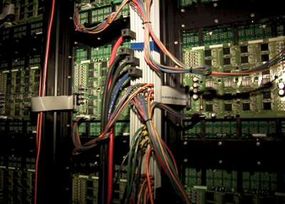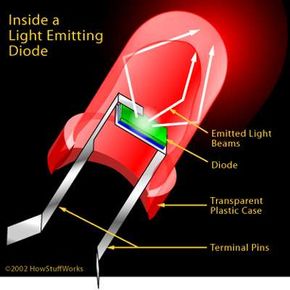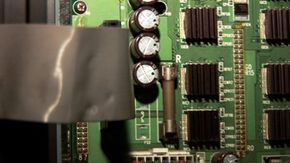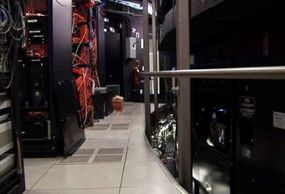Times Square in New York City has an amazing light show, and NASDAQ's sign adds to it from the southwestern corner of the square. The NASDAQ display is notable because it's the largest continuous sign in Times Square. It has close to 9,000 square feet of display space -- about a quarter of an acre.
Have you ever wondered what it takes to make a sign like this? It looks relatively sleek and simple, but there's actually a massive amount of technology involved.
Advertisement
Let's start with the smallest part of the sign -- a single Light Emitting Diode, or LED. An LED is a tiny colored light bulb, and you can read How LEDs Work to learn exactly what makes them work.
On any large LED sign like this, it's normal to use clusters of LEDs to make one pixel. For example, a sign might use two red LEDS, two blue LEDs and three green LEDs to make a single pixel. By changing the amount of power going to the LEDs of each color, it's possible to mix the three primary colors together to create any color of the rainbow. Turn all the LEDs on and you get white light; turn them all off and you get black. And you can create any combination in between. In this sense, there are single LEDs that come in red, green and blue, while there are pixels made up of collections of red, green and blue.
The next step up in the NASDAQ sign is a tile. Each tile is about one square foot and contains 16x16 pixels. That's 2,048 LEDs in the case of the NASDAQ sign. The front side of the tile is black, and covered with LEDS. The back side of the tile looks a little like a computer motherboard. It contains all the electronics needed to drive all the LEDs on the tile.

Advertisement





